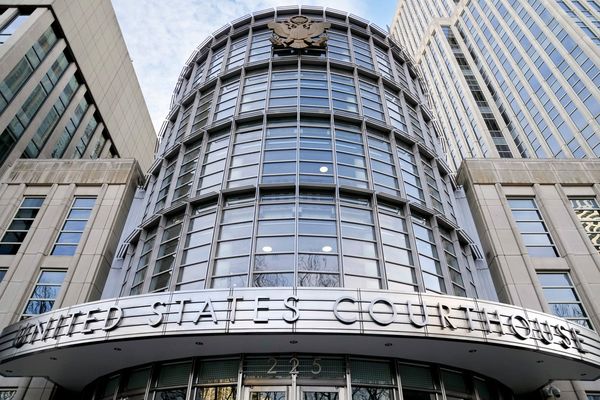
Treasury officials produce an end-of-year budget and fiscal outlook called Myefo, or the mid-year economic and fiscal outlook. Sometimes, Myefo is effectively a mini-budget. But most often, it’s about housekeeping. Given the proximity to Christmas, Myefo can attract seasonal analogies in news coverage: the Grinches that Stole Christmas, or Spendathon Santa is Coming to Town. As the Albanese government tries to bank higher tax receipts and limit discretionary spending in an effort to curb inflation, while leaving open the option of producing a second surplus in next May’s budget – this year leans more Grinch than Santa.
The big savings measure
Labor says it has produced $72.7bn in savings since coming to office. A further $9.8bn in savings and reprioritisations are booked in this Myefo. The finance minister, Katy Gallagher, was fortunate to get the infrastructure minister, Catherine King, as her secret Santa this year because the majority of this year’s contributions – $7.4bn – come from King’s portfolio. In mid-November, the infrastructure minister confirmed the government would slash 50 high-risk infrastructure projects across the country, with savings directed at other “nation-building” projects.
From big, to biggish
Myefo says the government will raise $500m from a decision to stop allowing interest charged by the Australian Taxation Office to be claimed as a tax deduction. Taxpayers incur interest when they don’t pay their tax debts on time, or they self-assess incorrectly, resulting in money owed to the ATO. Both the general interest charge and shortfall interest charge are now tax deductible. The government says removing these deductions will encourage taxpayers to pay on time and not mess up self-assessment. The crackdown begins from 1 July 2025.
Passports and penalty units up
If you need a new passport after July 2024, be prepared to fork out. Myefo reveals passport fees will increase by 15% from next July, raising $349m in revenue over three years after 2024-25. That money will be redirected to other priorities in the foreign affairs portfolio. As well as passports, there’s also additional revenue raising from penalty units. What’s a penalty unit you ask? These are fines payable for communication, financial, tax and fraud offences. At the moment a penalty unit is $313. That will increase to $330 once necessary legislation passes the parliament, increasing receipts by $4.5m over five years from 2022–23.
Also up: the tax take overall
Inflation might have peaked, but Australians are very conscious of the cost-of-living squeeze – paying higher prices for essentials like food and electricity. Wages are starting to tick upwards after a long period of stagnation. The tax take is also up. Receipts have been revised up in Myefo by $64.4bn over four years to 2026–27. Strong employment growth means more people in the labour market paying more income tax. High commodity prices and strong corporate profits have increased the company tax take as well. Tax receipts are running currently at 23.7% of GDP. That ratio is high in historical terms, although everything is relative – this measure hit 23.9% during the Howard era. Myefo forecasts the tax to GDP ratio will come back to 23.3% by 2026–27.
Driving the take-up of electric vehicles
Speaking of tax, the government will increase tax receipts by $155m over five years from 2022–23 by tweaking the luxury car tax. This measure looks ahead to an emissions reduction strategy for transport we’ll see early next year which includes a fuel efficiency standard for cars. The government will tighten the definition of a fuel-efficient vehicle from July 2025 and adjust indexation rates. The new definition for tax purposes reduces the maximum fuel consumption from 7 litres for every 100km, to 3.5 litres for every 100km. The measure in Myefo says the change will encourage greater take-up of fuel-efficient vehicles.
But there are still big calls on spending
It’s obvious the government is trying to resist big cash splashes beyond the measures it has already implemented to help Australian households manage high inflation. While polls show people want more help, opening the purse strings could make inflation worse. It’s possible more help might come in next May’s budget depending on how things are tracking. But while the government is attempting to maintain fiscal discipline in tough economic times, Myefo confirms there are big calls on the budget over the years to come: in health, in defence, in the national disability insurance scheme, in aged care, and for the transition to net zero.







